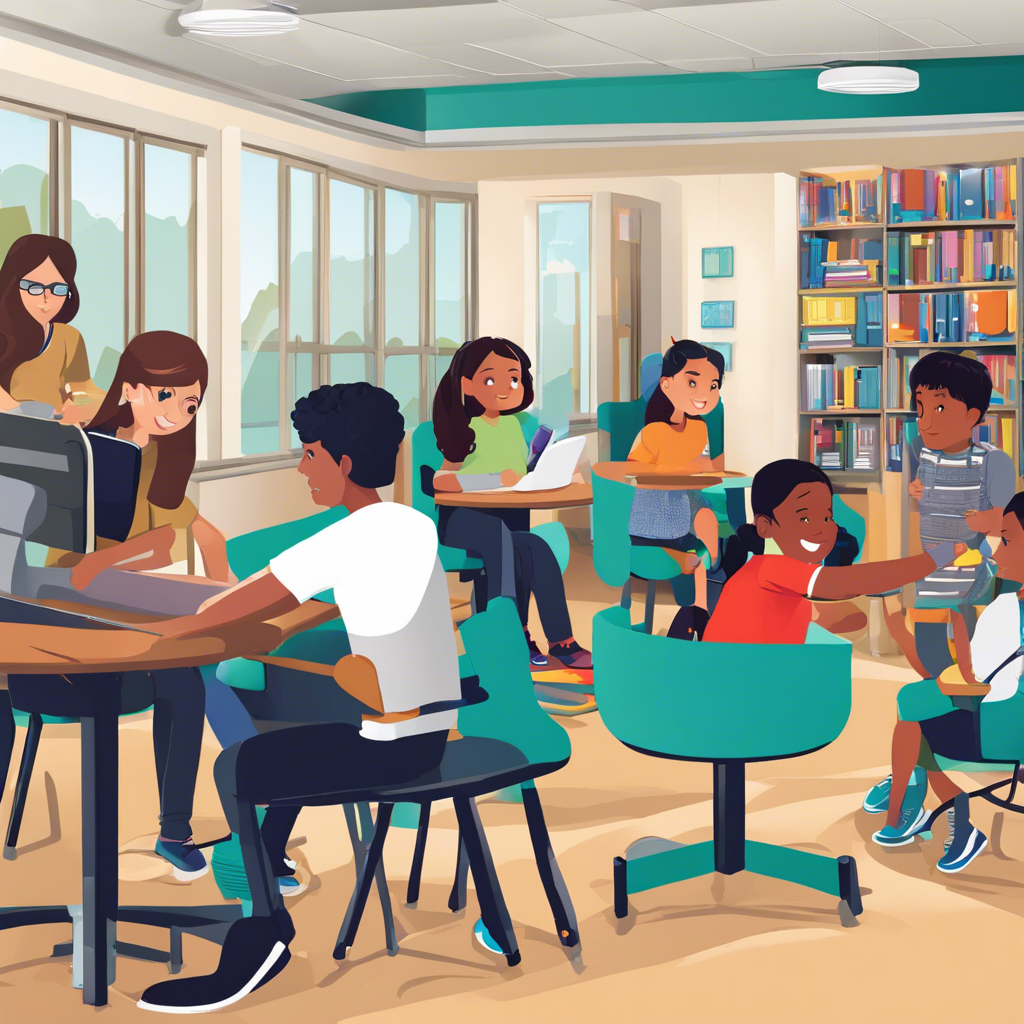Flexible seating impacts student focus and collaboration, improving education outcomes through enhanced learning environments.
In today’s educational landscape, schools are constantly seeking innovative ways to enhance student learning and overall well-being. One such innovative approach gaining traction is the implementation of flexible seating in classrooms. This approach involves creating a dynamic learning environment by offering students a variety of seating options, allowing them to choose where and how they engage with their learning materials. The concept of flexible seating is rooted in the understanding that different students have varying preferences for posture and spatial arrangement, which can significantly impact their focus, collaboration, and overall engagement.
Several academic institutions and researchers have explored the impact of flexible seating on student outcomes, and the results are compelling. A study conducted by the University of Minnesota found that students in classrooms with flexible seating arrangements demonstrated improved attention spans and increased engagement during lessons. The study also revealed a positive correlation between flexible seating and enhanced student collaboration, as the varied seating options encouraged more dynamic group work. To delve deeper into this topic, we will explore the various aspects of flexible seating and its potential benefits.
Benefits of Flexible Seating in Classrooms
Enhanced Focus and Comfort
Traditional classrooms often feature uniform desks and chairs, which may not cater to the diverse needs of students. Flexible seating, on the other hand, offers a range of seating options, including bean bags, standing desks, wobble stools, and even exercise balls. This variety allows students to choose the seating arrangement that best suits their learning style and physical comfort.
Encouraging Movement and Engagement
The freedom to move around the classroom is a significant advantage of flexible seating. Students can change their seating positions throughout the day, which helps keep them engaged and active. This approach is particularly beneficial for students with high energy levels or those who struggle with focus during prolonged periods of sitting. Research suggests that movement can enhance cognitive function and attention, contributing to better learning outcomes. For more insights on this, see [Impact of Movement on Learning](https://www.edutopia.org/article/impact-movement-learning-sarah-levis).
Fostering Collaboration and Social Interaction
Flexible seating arrangements often lead to more collaborative and social learning environments. Students are encouraged to work together and interact in various seating configurations, promoting teamwork and peer-to-peer learning. This shift in classroom dynamics can be particularly beneficial for group projects and discussions, as students are more likely to engage in active participation.
Unleashing Creativity and Ownership
The flexibility offered by this approach extends beyond seating choices. Students can often personalize their workspaces, fostering a sense of ownership and creativity. This autonomy allows students to express their personalities, making the learning environment feel more welcoming and engaging.
Implementing Flexible Seating in Schools
Tips for Teachers
When implementing flexible seating, teachers should consider the following:
- Start with a few seating options and gradually expand based on student feedback and classroom dynamics.
- Encourage students to explore different seating arrangements to find what works best for them.
- Set clear expectations for behavior and movement to maintain a productive learning environment.
- Create a system for managing student preferences and ensuring fairness in seating choices.
Q&A: Addressing Common Concerns
How can teachers manage potential distractions from flexible seating arrangements?
Teachers should establish clear guidelines for movement and behavior, ensuring that students understand the purpose of flexible seating and how it contributes to their learning. Regular check-ins and feedback sessions can help address any concerns.
Are there specific types of classrooms or subjects where flexible seating is more effective?
Flexible seating can benefit various subjects and classroom environments. However, it may be particularly effective in subjects that involve group work or hands-on activities, such as science labs or art classes.
Conclusion: A Flexible Future for Education
Flexible seating is a powerful tool for enhancing student focus, collaboration, and overall engagement in the classroom. By providing students with a variety of seating options, educators can create a dynamic and personalized learning environment. The impact of this approach is evident in improved student outcomes, increased comfort, and a more collaborative classroom culture. As schools continue to explore innovative teaching methods, flexible seating offers a promising avenue for enhancing the educational experience and preparing students to thrive in diverse learning environments.
—
Recommended external links:
1. [The Benefits of Flexible Seating in the Classroom](https://www.edutopia.org/article/flexible-seating-in-classroom-benefits-and-challenges-rebecca-brane)
2. [The Impact of Movement on Learning](https://www.edutopia.org/article/impact-movement-learning-sarah-levis)
3. [Classroom Seating Arrangements: What You Need to Know](https://www.teachervision.com/classroom-management/seating-arrangements/11149.html)
